Keywords
|
| DGS, ANN, Interleaved boost converter, STATCOM |
INTRODUCTION
|
| Electricity grids are evolving into smarter phase, simultaneously the use of distributed generation is increasing. The traditional electricity transmission model has the involvement of larger power generators located at a distance far away from the consumers’ end. The electricity produced is transmitted to the distribution grids and load centers that are miles away from the generating station. This is not the case in the distributed generation. Here, generators of small to large capacities are utilized to satisfy the power demand locally and which may be even connected to the existing utility grid to deliver the excess power available. These power sources may be quite small, for instance a rooftop panels amounting 3 to 5 kilowatts or a utility scale 20 megawatt installations adjacent to substations. These tend to be more robust and are far less likely to cause a catastrophic failure. Long distance power transmission accounts to an average loss of 7% which may be as high up to 20% in case of long transmission lines which can be highly overcome with distributed generation. Vertical integrated systems no more exist and the grid has become more complex than as it was. As the price factor of photovoltaic cells drop and more PV installations bloom in urban areas, increases emphasis on distributed generation which contributes to the reduction in complexity of the grid and helps in making it smarter. |
| a. Aim and Scope: |
| The main aim behind the development of this system is to create a standalone power generating system (a distributed generation system) by using the solar power with the ability to provide an optimum power as per the standards. A standard 6-pulse inverter is chosen with which an interleaved power converter is employed with an idea of utilizing the complete energy from the solar power. An effort to add the compensation device with the system is attempted in the standalone system itself to improve the power factor of the system. This is done for the systems that need more concern in power quality. |
| Added advantage with this system is that, minor changes with the converter section, the same can be used to be operated along with wind power plant. Distributed generation, gaining wide importance in today’s power scenario, is developing in a higher rate. |
| b. Review of existing finding: |
| The use of interleaved DC-DC power converter that has proved its efficiency in obtaining maximum power output from an input that is of lower magnitude. The interleaved concept is used to meet the increased demands and also a low current ripple in source current due to this reducing the size of the filter component in input and output. [1] High power proton exchange membrane fuel cell necessitates techniques to reduce hysteresis inside fuel cell stacks. Interleaved DC-DC power conversion technique when clamped on circuit reduces the voltage spike on the power switches. Feasibility on performance and reduced ripples can be achieved when clamped with a secondary voltage doubler topology. Voltage spike on power switches are found to be reduced on this active clamped technique. [6] |
| The conventional single phase diode rectifier uses a large electrolytic capacitor to reduce DC voltage ripple, which produces a non sinusoidal line current which makes a mandate for the power factor correction techniques (PFC). Boost topology being most popular among the PFC techniques proves to be even more efficient with the interleaving concept which ensures 180o phase shift between the two interleaved converters there by contributing to PFC. [2] |
| The combination of a high frequency and a low frequency inverter ensures efficacy of active power filter or a STATCOM when verified by MATLAB/Simulink. The two inverters having low and high frequencies are operated separately at first. LF working on square wave and HF working on a LC passive filter maintains the operating voltage at convenient level. Simulating these two provides a better harmonic and reactive current compensating variant on topological findings. [3] |
| The regulating capability of an inverter for compensating harmonic currents can be improved using artificial neural network (ANN) controller. Two methods are developed, a neural PI control approach and a direct inverse neurocontrol approach. To learn and to converge to optimal values of P and I parameter, the PI technique uses adaline function. These two neural networks are used in direct inverse control scheme. The ANN is trained and is operated to work under changing parameters of an electrical network on an active power filter (APF). The results prove to be showing an optimal working of the inverter. The proposed approaches are found to be compatible for a favorable hardware implementation. [4] |
| Transition between Standalone and Grid connected operations ensure continuous power delivery through a smooth frequency variation technique which provides lower THD on voltage waveforms. The analysis of proportional frequency variation sizes helps to find the means to minimize THD. By incorporating smooth frequency variation, seamless transition between inverter modes with minimal distortion is achieved. [7] |
| A 1000 Watts 230 Volts 50 Hz Power Inverter is designed and developed. This inverter is built with easily available materials that are made according to the regulated standards. The inverter basically uses 12 V DC input to operate that is provided using a standard battery. With the help of integrated circuitry, the given input is converted to 230 V 50Hz which is obtained from the winding of the transformer. The designed is found to be competitive and is affordable. [5] |
| An interleaved isolated boost converter helps to maintain high power load to DC-DC application when the secondary sides are connected to two isolated boost converter cells. The input indicators lower the input current ripple and share the input current when connected in parallel. The output capacitors on parallel manner share voltage. Extending the interleaved structure to the isolated boost converters and various other converters help them for high power applications. Topological efficacy indicate the preference of interleaved isolated booster converter over L-Type half bridge converter for high power regulation. [8] |
PROPOSED METHOD
|
| The proposed topology can be described by explaining the circuit diagram in Fig 1 given below. The main aim of the project is to utilize the Solar Energy more judicially. The supply from the solar array is given to the interleaved DC-DC boost converter. The Interleaved Converter contains two boost converters operating in 1800 phase shift with each other. This helps in obtaining the output power from the Solar Array for a full duty cycle. Now, this output voltage is given to a standard Three Phase Inverter through a DC-link capacitor. The output from the inverter is then filtered using inductors and capacitors connected along the line and are supplied to the load. The proposed topology contains compensation device. Here, a STATCOM is chosen which is connected at the point of common coupling (PCC), helps in compensating the reactive power supply. Adding the STATCOM in the system helps in increasing the source side power factor, which is highly desirable when more utilities are connected to the designed stand alone system. A detailed description for various modules used in the Simulink model is presented below. The operation of the whole system is controlled using artificial neural network (ANN) controller which is found to be performing well. Following the circuit diagram is the block diagram in Fig 2 which shows the various blocks involved in the operation of the system. |
| a. Standalone PV system: |
| A standalone photovoltaic system can be used to generate electricity in the locations where an existing grid cannot reach or there is no possibility of constructing a transmission system. Solar energy can be obtained only during the daytime; hence it is of a paramount importance to have a battery storage facility to provide electrical energy during night and on cloudy days. Such system uses more reliable rechargeable lead batteries, due to their ability to accept with high efficiency both low and high input voltages. A battery regulator and load shedding circuit prevents overcharging and deep discharges. Hybrid systems are widely used for applications that function on a year-round basis due to the uncertainty of the solar energy systems during winter season. The photovoltaic system will provide a battery output voltage of 12 or 24 volts DC. To supply devices which are only available for AC voltages standalone PV system is to match the prospective energy consumption with the local average solar irradiation, the resulting energy production and the required storage capacity. |
| b. Interleaved DC-DC – power converter: |
| The classical converters operate by rectifying the input AC line voltage and filtering it with large capacitor. The filter capacitor helps in reducing the ripple present in the output voltage but introduces distortion in the input current which reduces the power factor, hence PFC techniques are used. The active PFC technique gives a much better result than the passive one and the boost converter is the efficient topology as it draws continuous input current. But there are ripple in the input current due to inductor of boost converter which can be minimized by using two phase interleaved boost converter. In two phase interleaved boost converter two boost converters operate in 180o out of phase. This input current is the sum of two inductor currents (Fig 3). As the inductor’s ripple currents are out of phase they cancel each other out and reduce ripple current that the boost converter causes. Hence the interleaved boost converter, prove to be more efficient than an ordinary boost converter by helping to use the provided infrastructure more viably. The use of semiconductor power devices such as bipolar transistors, thyristors for voltage amplification, particularly the MOSFET as the power switches, makes the inverter a better additional power supply. The inverter is less noisy, provides complete automatic switchover function, posses no environmental threats, less bulky and less expensive to maintain. |
| c. Three phase inverter: |
| An inverter is used to provide uninterrupted 220 volts AC supply to the load connected to its output socket. It provides constant AC supply at its output socket, even when the AC mains supply is not available. Most of the electrical equipment works with the 220 volts AC supply but internally, their circuits work on the DC supply. Hence the external AC supply is converted into DC supply by the power supply unit on these equipments. Any device that works on DC supply can be used during the mains power breakdown by connecting them to batteries. An inverter is used to power device that does not have the facility to connect to a DC power source or device that requires AC power source for its operation. Use of MOSFET as the power switches, makes the inverter a better additional power supply. Basic configuration of the VSIs that are commonly used in existing system is as shown in Fig 4. The inverter is less noisy, provides complete automatic switchover function, posses no environmental threats, less bulky and less expensive to maintain. |
| d. STATCOM: |
| Power factor correction brings the power factor of an AC power circuit closer to 1 by supplying reactive power of opposite sign, adding capacitors or inductors which act to cancel the inductive or capacitive effects of the load, respectively. This is done by using STATCOM switching. Most advanced compensation device is the voltage source converters (VSC) incorporated as a variable source of reactive power. The output from the STATCOM is given to the three phase step up transformer and then to three phase main supply. Each load has its own power factor and current ratings. Hence as a result there is a variable power factor in each load. The STATCOM device is used to provide power factor improvement in the system which is evident from the Fig 5. The load is connected to the three phase supply and the output from the MOSFET which is fed to the three phase step up transformer is connected to the three phase supply. Hence there is an improvement in the supply side. The voltage and current transformers sense the voltage and current consumption and their output are sent to microcontroller. |
| e. Artificial Neural Network: |
| The most significant disturbances in electrical supplies are caused by the proliferation of the nonlinear loads, such as rectifiers, computer equipments, air-conditioning apparatuses or lightings containing fluorescent tubes. These devices absorb non sinusoidal currents and introduce harmonic pollutions in the currents and the voltages. These harmonics circulate in the electrical supply networks, can disturb the performance of the electrical devices, and moreover can destroy them. The first success in applying ANNs to power systems is incontestably the case of the control of motor drives. ANN are also efficiently used for reactive power/voltage control in power systems. The efficient use of neural networks for the identification and control of nonlinear dynamical systems has firstly been demonstrated. While basic concepts and definitions are introduced, this work investigates above all static and dynamic back propagation learning for MLP architectures. Simulation results reveal that the suggested identification and adaptive control schemes are practically feasible. Inverters are used in APF schemes to inject reference currents in the electrical power lines. APF schemes rely on the identification of the distortion harmonics from the measures of the voltages and currents of the power lines. This results in reference currents which must be injected phase-opposite in the electrical power systems. The inverter, generally associated to an output filter implemented by analog circuits, is thus controlled by the reference currents. The ANN is found to be more advantageous than the conventional PI controller due to the fact that it proved to be more efficient in many ways. In the conventional PI, PID controller, the response time is found to be 51 ms for 5th and 7th harmonics order and the artificial neural network controller gives a response time of 31ms for the same order of harmonics. |
CIRCUIT SIMULATION
|
| In the proposed model, the primary source is chosen to be from Solar Energy. The Fig 7 contains the modules of Solar Panel, Interleaved DC-DC Converter (inside Subsystem 1) and Three Phase Inverter. To reduce the complexity of the system, these are kept under the hood. The displays connected in the system shows the various values corresponding to the points connected. |
| The above Fig is the complete simulation of the proposed model. The subsystem in the left extreme of the Fig 8 contains the modules of Solar Array, Interleaved DC-DC Boost Converter and Three Phase Inverter. The block named as Measurements and Calculations contains the filtering process and power factor calculations and the block named Waveforms contains the various waveforms that are obtained at different junctions in the transmission line. |
| The above given Fig 9 is the simulation of Interleaved DC-DC converter. As mentioned earlier, the interleaved converter consists of two converters connected in a parallel form and it is evident from the Figure. The gating sequence for the switches in the converter is controlled using a conventional PI controller. The output voltage from the converter, which is to be fed in to the inverter is shown in the display. |
SIMULATION RESULT
|
| Fig 10 shows the real power absorbed and reactive power being supplied by the STATCOM. The STATCOM is supplying the required reactive power demand at the load side. |
| Fig 11 shows the voltage and current waveforms of the source and the load side when the STATCOM is connected in the system. It can be seen that, when STATCOM is connected, the load voltage and current is found to be even. |
| Fig 12(a) shows the three phase waveforms of the voltage and current in source and the load side. Fig 12(b) shows the output from the STATCOM and the DC-link voltage obtained at the DC-link in the system. |
| Fig 13(a) shows the THD value of the output wavefrom when STATCOM is not connected and the Fig 13(b) shows the THD value of the output wavefrom when STATCOM is connected with the system. This proves that the STATCOM is efficient in bringing down the THD value even with a standalone system. |
CONCLUSION
|
| A standalone distributed generation system is designed that operates under balanced load condition, with solar PV system. The novelty of the scheme is reinforced with the presence of interleaved power converter at the source end. The boost converter operates very efficiently that it provides sufficient level of DC voltage to withstand high loads. A standard three phase-six pulse inverter is used which helps in converting the boosted DC voltage to AC voltage and feed to the load. STATCOM is added at the PCC which helps in maintaining the power factor of the system thereby contributing to the power quality of the system. The system can be made to operate in a grid connected platform by adding suitable storage medium and by hybridization. ANN controller is used to control the pulses sent to the inverter as well as the interleaved power converter. An optimal operation of the system can be very well observed from the evident waveforms obtained on simulation. The whole system is simulated in MATLAB/Simulink environment. In the future, the proposed work can be further modified using different inverters and varying loads. With the help of neurofuzzy controller, more sophisticated learning mechanism can be obtained. |
Figures at a glance
|
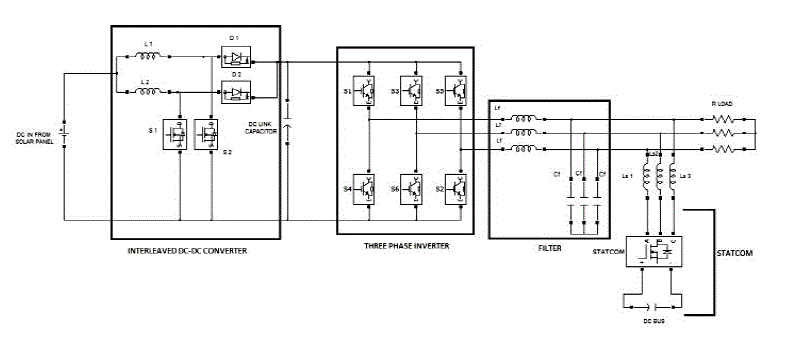 |
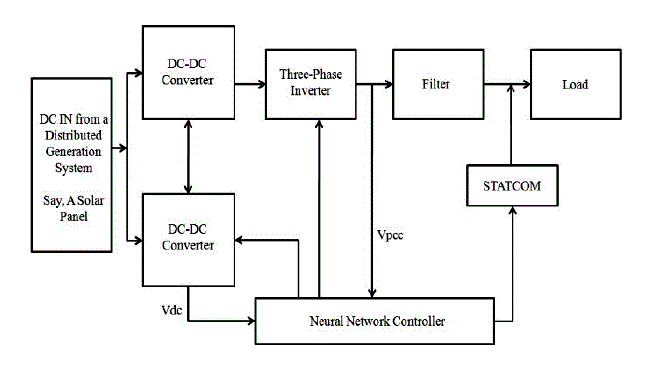 |
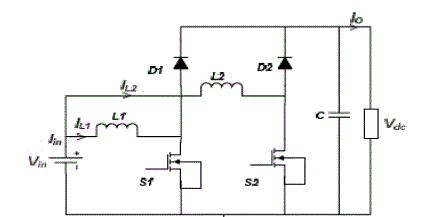 |
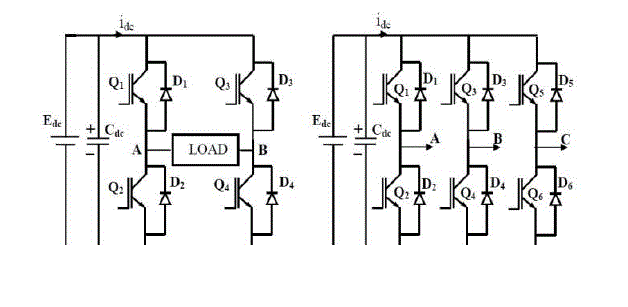 |
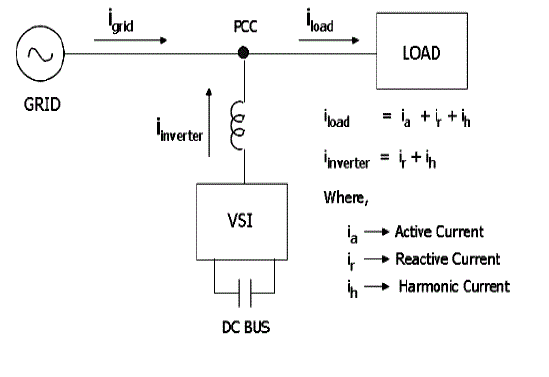 |
| Figure 1 |
Figure 2 |
Figure 3 |
Figure 4 |
Figure 5 |
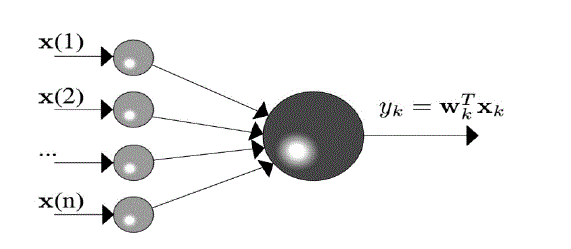 |
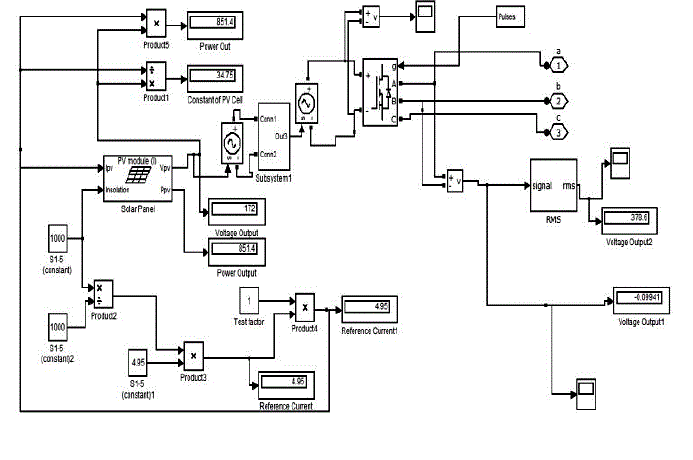 |
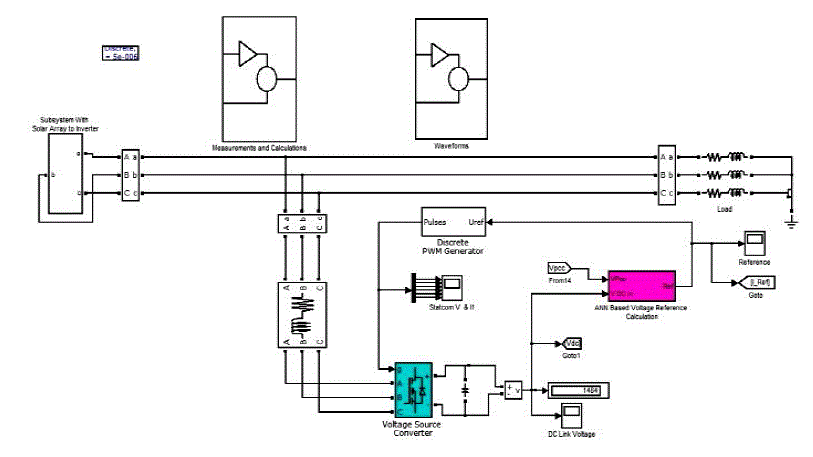 |
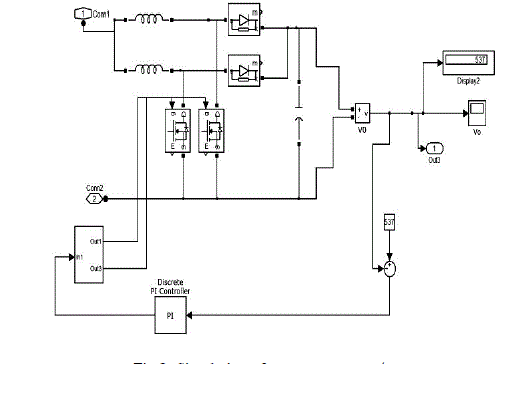 |
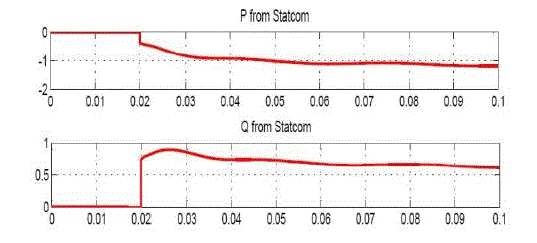 |
| Figure 6 |
Figure 7 |
Figure 8 |
Figure 9 |
Figure 10 |
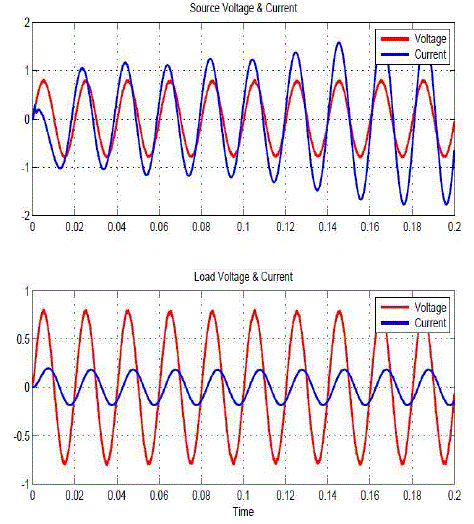 |
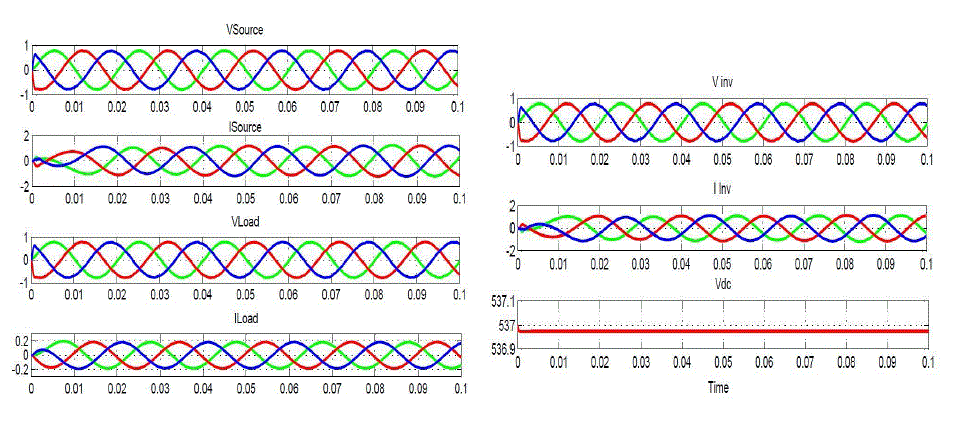 |
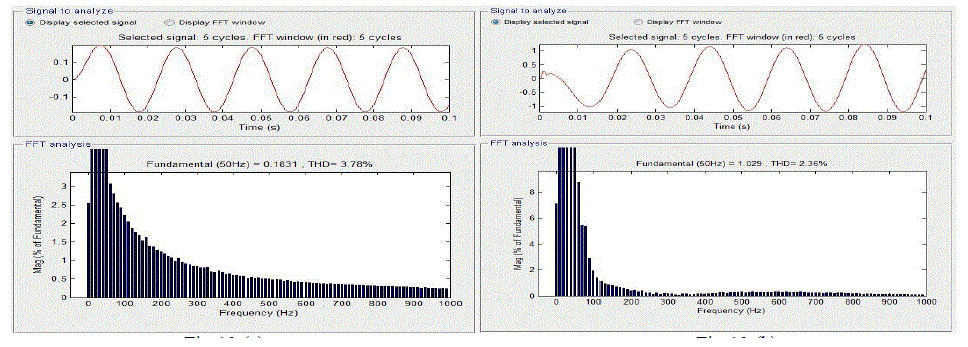 |
| Figure 11 |
Figure 12 |
Figure 13 |
|
References
|
- H. M. MallikarjunaSwamy, K.P.Guruswamy, S.P.Singh, “Design And Implementation Of Two Phase Interleaved Dc-dc Boost Converter With Digital Pid Controller,” IJEEE, Vol. 3, Issue-1, 2013
- SaubhikMaulik, Pradip Kumar Saha, Goutam Kumar Panda, “Power Factor Correction By Interleaved Boost Converter Using PI Controller,” Int. Journal of Engineering Research and Applications, Vol. 3, Issue 5, Sep-Oct 2013
- Tuhin S. Basu, AvikBhattachatya, ChandanChakraborty, “Shunt Active Power Filter/STATCOM Topology for Medium/High Power Applications: Parallel Inverters Operating at Different Switching Frequencies,” IECON 2010 - 36th Annual Conference on IEEE Industrial Electronics Society IEEE 2010, Pg-2669
- D. OuldAbdeslam, P. Wira, D. Flieller, and J. Mercklé, "Artificial Neural Networks to Control an Inverter in a Harmonic Distortion Compensation Scheme," International Symposium on Industrial Electronics (ISIE'2008), Cambridge, UK, 2008
- Olusegun O. Omitola, Segun O. Olatinwo and Taiwo R. Oyedare, “Design and Construction of 1KW (1000VA) Power Inverter,” Innovative Systems Design and Engineering, Vol.5, No.2, 2014
- Shih-Jen Cheng, Yu-Kang Lo, Huang-Jen Chiu, Shu-Wei Kuo, “High-Efficiency Digital-Controlled Interleaved Power Converter for High-Power PEM Fuel-Cell Applications,” IEEE Trans. Ind. Electron., Vol. 60, No. 2, February 2013
- Md. Nayeem Arafat, SreeshailamPalle, YilmazSozer, Iqbal Husain, “Transition Control Strategy Between Standalone and Grid-Connected Operations of Voltage-Source Inverters,” IEEE Trans. On Ind. App., Vol. 48, No. 5, September/October 2012
- Jun Wen, Taotao Jin, KeyueSmedley, “A New Interleaved Isolated Boost Converter for High Power Applications,” Applied Power Electronics Conference and Exposition, IEEE 2006
|